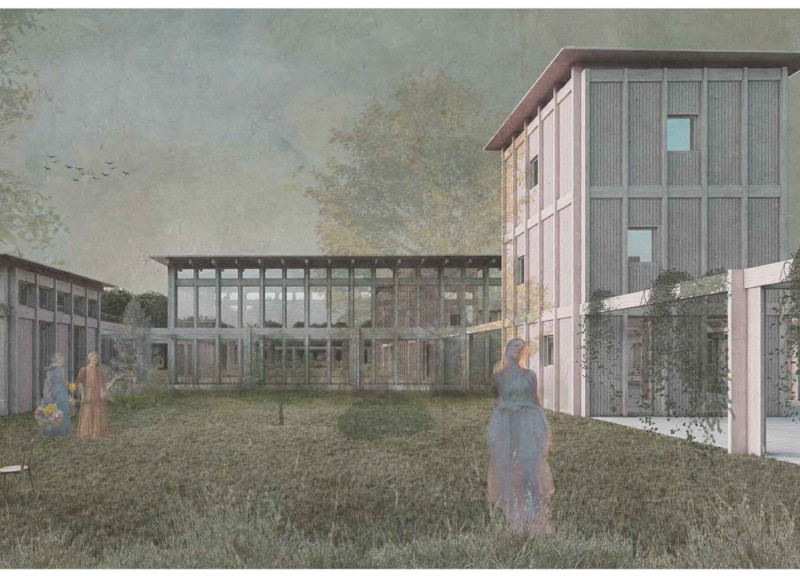5 key facts about this project
Each living module is carefully designed to support the daily activities of artists and couples. The main building consists of several individual units that incorporate essential amenities such as living rooms, kitchens, bedrooms, and bathrooms, alongside dedicated studio spaces that encourage creativity. The layout prioritizes open spaces, allowing for effective natural light distribution while fostering an environment conducive to artistic collaboration.
Flexible Space Utilization
The unique aspect of the architectural design lies in its modular structural concept, utilizing a 5x5 meter grid that governs the organization of spaces. This systematic approach allows for customization, providing artists with the freedom to adapt their environments based on specific needs. The design employs minimal internal walls, which maximizes the perception of space and promotes a collaborative atmosphere. These characteristics differentiate the Omuli Museum of the Horse from more conventional projects.
The incorporation of communal spaces, such as exhibition areas and workshops, highlights the project's commitment to fostering a vibrant artistic community. These areas are thoughtfully integrated into the design, encouraging social interaction and engagement among residents and visitors. The relationship between individual units and communal areas represents a modern take on living and working environments, facilitating collaboration while ensuring personal privacy.
Material Selection and Sustainability
Material considerations are a crucial element of the Omuli Museum of the Horse project. The primary materials include wood, glass, and concrete, each chosen for their functional benefits and aesthetic appeal. Wood serves as the primary structural component, bringing warmth into the spaces while ensuring sustainability. The use of glass enhances the connection between indoor and outdoor environments, allowing for light infiltration and visual continuity. Concrete elements provide structural integrity and are essential for foundational support.
The design integrates landscaping, further enhancing the relationship between the built environment and nature. Gardens and open areas are interspersed within the project, offering serene spaces for reflection and inspiration. This blend of architecture and landscaping underscores a holistic approach, aiming for minimal environmental impact while maximizing user experience.
To gain deeper insights into the architectural plans, architectural sections, and other architectural designs, readers are encouraged to explore the comprehensive project presentation. Such exploration will provide a clearer understanding of how the Omuli Museum of the Horse encapsulates modern design principles and addresses contemporary needs in architecture.


























